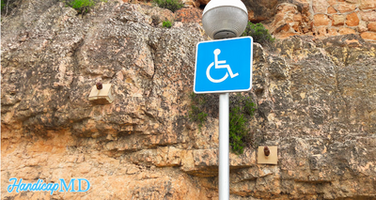
Understanding the Eligibility Criteria for a Handicap Placard in Pennsylvania
Introduction
When it comes to obtaining a handicap placard in Pennsylvania, it's important to understand the eligibility criteria. Handicap placards provide individuals with disabilities convenient parking options, allowing them to access essential services and go about their daily activities more easily. In this comprehensive guide, we will delve into the details of the eligibility criteria for a handicap placard in Pennsylvania, ensuring that you have all the information you need to navigate the process successfully.
Who Qualifies for a Handicap Placard?
To qualify for a handicap placard in Pennsylvania, an individual must meet certain eligibility requirements. These requirements are in place to ensure that the placards are reserved for those who genuinely need them. The following individuals are generally eligible for a disability tag:
- Individuals with a physical disability that impairs or limits their mobility.
- Individuals who require the use of mobility devices such as wheelchairs, crutches, or walkers.
- Individuals with visual impairments or blindness.
- Individuals with severe cardiovascular or pulmonary conditions.
- Individuals with certain medical conditions that make walking long distances difficult or dangerous.
- Individuals with respiratory conditions that require the use of portable oxygen.
Permanent Disabilities: Individuals with permanent disabilities that significantly impact their mobility, such as paralysis or loss of limbs, are eligible for a handicap placard. Medical documentation or certification from a licensed healthcare professional is usually required to establish the permanent nature of the disability.
Temporary Disabilities: Individuals with temporary disabilities, including those recovering from surgeries, injuries, or medical treatments that affect their mobility, may also be eligible for a temporary disability tag. In such cases, a licensed healthcare professional must certify the temporary nature of the disability and its expected duration.
Visual Impairments: Individuals with visual impairments that impede their ability to operate a vehicle or navigate their surroundings may qualify for a handicap placard. An eye specialist or an ophthalmologist can provide the necessary certification to support the application.
How to Apply for a Handicap Placard?
Applying for a handicap permit in Pennsylvania involves a straightforward process. Follow these steps to ensure a smooth application process:
1. Obtain the Application Form
The first step is to obtain the application form for a handicap placard. This form, known as Form MV-145A, can be downloaded from the official website of the Pennsylvania Department of Transportation (PennDOT).
2. Complete the Application Form
Once you have the application form, carefully fill it out with accurate and up-to-date information. Ensure that you provide all the necessary details to avoid any delays in the processing of your application.
3. Provide Medical Certification
To support your application, you will need medical certification from a qualified healthcare professional. This certification should include details about your specific disability or medical condition and the need for a disability tag.
4. Submit the Application
After completing the application form and obtaining the necessary medical certification, submit your application to the local PennDOT office. Be sure to include any required fees and supporting documents as specified on the application form.
5. Receive the Handicap Placard
If your application is approved, you will receive your disability tag by mail. It's important to read and understand the guidelines and regulations associated with the use of the placard to ensure compliance.
Understanding the Eligibility Criteria in Detail
To gain a deeper understanding of the eligibility criteria for a handicap placard in Pennsylvania, let's explore some key points in detail:
Permanent Disabilities
Individuals with permanent disabilities are eligible for a long-term disability tag. These disabilities include conditions such as amputations, spinal cord injuries, and permanent mobility impairments. A medical certification specifying the permanent nature of the disability is typically required.
Temporary Disabilities
If you have a temporary disability that affects your mobility, you may be eligible for a short-term disability tag. Temporary disabilities can result from injuries, surgeries, or medical conditions that have a temporary impact on your ability to walk. A medical certification indicating the expected duration of the disability is usually required.
Visual Impairments
Individuals with visual impairments, including blindness, are eligible for a disability tag. The certification from an ophthalmologist or optometrist should clearly state the nature and extent of the visual impairment.
Cardiovascular or Pulmonary Conditions
People with severe cardiovascular or pulmonary conditions that significantly limit their ability to walk can qualify for a disability tag. These conditions may include heart disease, chronic obstructive pulmonary disease (COPD), or other similar conditions. A medical certification outlining the specific condition and its impact on mobility is necessary.
Neurological Conditions
Individuals with certain neurological conditions that affect their mobility, such as multiple sclerosis, cerebral palsy, or Parkinson's disease, may qualify for a disability tag. A medical certification from a neurologist or other relevant healthcare professional is typically required.
Respiratory Conditions
Certain respiratory conditions, such as chronic asthma or cystic fibrosis, can make it difficult for individuals to walk long distances. People with these conditions may be eligible for a disability tag, provided they have the necessary medical certification.
Orthopedic Conditions
Orthopedic conditions that affect mobility, such as arthritis, joint replacements, or severe back problems, may qualify individuals for a disability tag. A medical certification that clearly outlines the condition and its impact on mobility is usually required.
Terminal Illnesses
Individuals with terminal illnesses that significantly impair their mobility and require assistance may be eligible for a disability tag. A medical certification stating the terminal nature of the illness and its impact on mobility is typically required.
Veterans
This state offers special provisions for disabled veterans. Veterans with a service-related disability that impairs their mobility can obtain a disability tag. Proof of service-connected disability is necessary.
Benefits of Having a Handicap Placard:
Having a Pennsylvania handicap placard offers several advantages to individuals with disabilities. These benefits include:
Accessible Parking: The most obvious benefit of a disability sign is the availability of designated accessible parking spaces. These spaces are conveniently located closer to building entrances, ensuring easier access for individuals with mobility challenges.
Reduced Walking Distance: With accessible parking spaces located nearer to entrances, individuals with disabilities experience reduced walking distance, minimizing the strain on their mobility.
Increased Independence: A disability sign allows individuals to retain their independence by providing them with easier access to public facilities, such as shopping centers, medical offices, and recreational areas. This increased accessibility promotes a more inclusive and equitable society.
Enhanced Safety: By allocating dedicated accessible parking spaces, the risk of accidents and injuries is reduced, as individuals with disabilities can safely navigate their way in and out of their vehicles.
Frequently Asked Questions (FAQs)
Q: How long does a handicap placard remain valid in Pennsylvania?A: In this state, a handicap placard is typically valid for up to five years. However, the expiration date may vary based on individual circumstances and medical certifications.
Q: Can I use my Pennsylvania handicap placard in other states?A: Yes, this state has reciprocity agreements with many other states. This means that your Pennsylvania handicap placard will generally be recognized and valid in those states. However, it's always recommended to check the specific regulations of the state you plan to visit.
Q: Can I transfer my handicap placard to another person?A: No, a handicap placard is non-transferable. It is issued to an individual and should only be used by that person. Misusing or lending a handicap placard to someone else is against the law.
Q: What should I do if my handicap placard is lost or stolen?A: If your handicap placard is lost or stolen, you should report it to your local law enforcement agency. Additionally, you will need to contact the Pennsylvania Department of Transportation to request a replacement placard.
Q: Can I renew my handicap placard online in Pennsylvania?A: Yes, this state allows individuals to renew their handicap placards online. The official website of PennDOT provides an online renewal portal for this purpose.
Q: Can I park in reserved handicap parking spaces with an out-of-state placard?A: Yes, if you have a valid disability sign from another state, you can use it to park in reserved handicap parking spaces in this state. However, it's essential to adhere to the specific regulations of each state regarding the use of out-of-state placards.
Conclusion
Understanding the eligibility criteria for obtaining a handicap placard in Pennsylvania is crucial for individuals with disabilities who require special parking accommodations. By following the application process outlined above, eligible individuals can acquire a disability sign, which grants them numerous benefits, including accessible parking, reduced walking distance, increased independence, and enhanced safety. If you or someone you know meets the eligibility criteria, we encourage you to take advantage of this valuable resource and enjoy the convenience and accessibility it provides.
.png)






